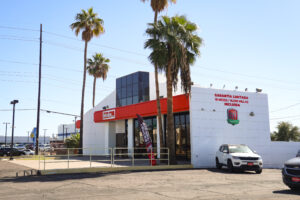One of the biggest limitations and frustrations of mainstream personal finance reporting is that it often includes nothing helpful for the people who need help the most: the poor and low-income people amid our audience.
With a few days yet to go in National Financial Literacy Month, why not consider a round-up of services and institutions in your market that do offer assistance to people of limited means?
Counseling.
Low-income people often can benefit from help in locating resources, planning a budget, finding creative ways to meet emergency expenses and navigating complex insurance, health care and credit systems. Where can they find it in your market? In addition to credit unions, members of the Jump$tart Coalition and community health agencies, I’d start checking with the state and county extension services; many of those I spot-checked offer financial literacy workshops for teens and adults. Others offer websites, booklets and podcasts. If your area universities have departments of family and consumer sciences — the modern-day equivalent of home ec — they may also be a resource for programming or expert commentary. Many churches have “money ministries” that offer counseling and support, as well.
Financial services.
As a number of national articles have pointed out over the last year, it’s expensive to be poor. People with a tattered credit history have a difficult time opening bank accounts — as many as 10 million households are ‘unbanked,’ according to the FDIC — and instead of the free checking and savings accounts enjoyed by those who maintain minimum balances, they pay costly premiums for check-cashing, wire transfers, money orders and more, in addition to finding it more cumbersome and difficult to pay utility bills and other obligations in a timely fashion. Fees mount up.
What services in your region offer low-cost banking to poor people? Here’s a fresh U.S. News & World Report article, “Options for the unbanked,” about “second chance” programs for people with bad banking histories, or other products like pre-loaded debit cards and secured credit cards. Just be sure to point out the fees. The low-income credit union initiative might make more sense for many poor people; here’s a press release from the National Credit Union Assocation about the project which supports local credit unions by allowing them to accept deposits from non-members and make loans.
Unconventional financial services.
It might be most useful to look for alternative financial services that people with limited resources can tap. One interesting concept is money pooling, in which individuals with bank accounts but poor cash flow combine their resources, with each person taking a turn at using a larger lump sum. Some online sites claim to facilitiate the process, like eMoneyPool, which does it for a fee of $25 per $500. The site also said it will make up shortfalls for people who don’t make their promised payments. (Defaulters get a black mark on their credit reports, too.) Crowd funding, micro lending and payday loan places are also markets to look into. Here’s an extremely detailed June 2013 report from the FDIC (including demographic and state-by-state data) on the use of “alternative financial services” like money orders and check-cashing firms, too.
It’s worth noting that recent reports say Walmart is getting into the wire transfer business, planning to offer a store-to-store money transmission for fees that are far below what Western Union charges but still around 10 percent of the amount of the transaction. You might take a look at the wire transfer companies in your neck of the woods; who is using them and why?











